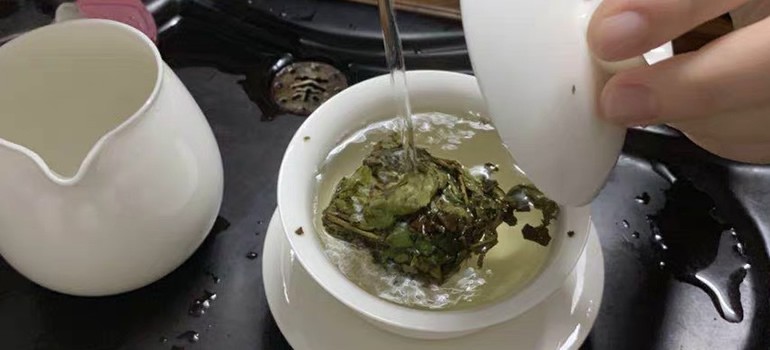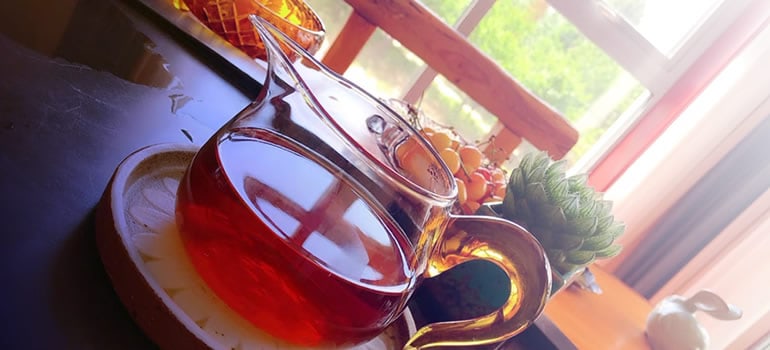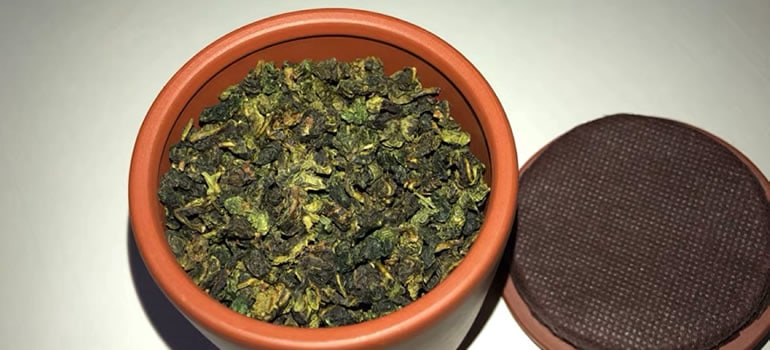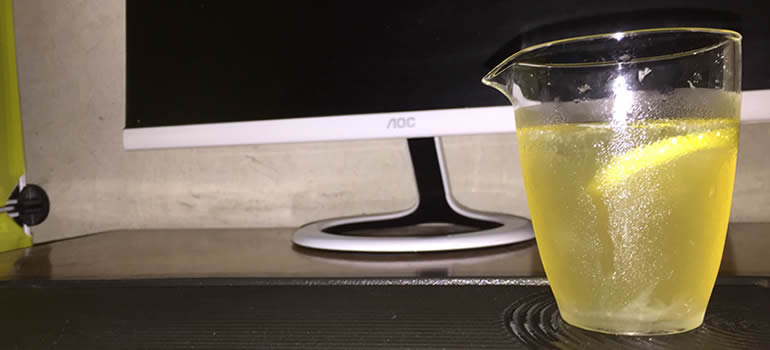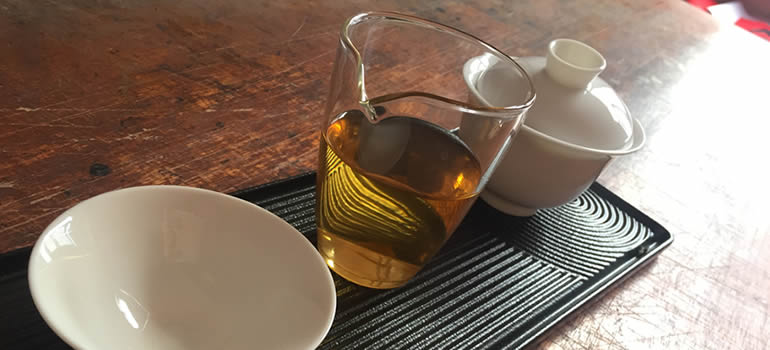
Tea is only as good as the container you drink it out of. Think about it. Nobody likes drinking tea that has a strange aftertaste to it.
And ruining your tea is not what we are all about here. There’s plenty of ways to do that. But here we are going to discuss the best and the worst materials to drink tea out of. So if you want your next cup of tea to taste just the right way, read on.
Generally speaking, there are at least several different types of materials we can drink tea out of:
- Stainless steel;
- Aluminum;
- Ceramic;
- Plastic;
- Glass;
- Silver; and
- Copper;
We will take an in-depth look at how each and every one of these performs. I am sure you are already suspecting that certain materials will do rather poorly and others should be avoided at all cost. And you will be right to think that way.
What Are the Properties You Need to Look For
When deciding on what will be the best container you can drink your tea out of there are several things that you need to keep in mind.
- It should not alter the taste of your tea;
- It should not leach any toxins or chemicals into the tea;
- It should be able to keep your tea warm for as long as possible;
I will be considering and discussing each one of these and more when reviewing the different materials used for the containers we can store and drink tea out of.
This article is going to be very helpful for you if you are looking to find out what is the best material for a teacup or if you are interested in getting yourself a water bottle, for instance, to fill up with your favorite tea and bring it with you to the office.
The material your cup is made from is going to be one of the most important decisions when it comes to drinking tea. As you will discover soon, not all materials are created equal. So let’s not waste any more time and jump right in.
What Are the Materials You Can Drink Tea out Of?
As you will see, indeed, we do have a great variety of different materials that are being used for the manufacturing of teapots, teacups, mugs, and bottles.
The list is not structured in any particular order. As sometimes how good or bad a particular material is going to vary, as you will see, depending on its manufacturing methods and overall quality.
Don’t worry about this as I will go into details about the pros and cons of each material.
Is stainless steel safe for tea?
Stainless steel is one of the most widely used materials for making bottles and even cups. I am sure you have seen these metal clanking cups that people bring with themselves when they go camping for a few days.
The advantage of stainless steel bottles and cups is that they are incredibly sturdy and durable. You can bring them almost anywhere, even throw them off a cliff. The result? Maybe slightly dented and scratched bottle or a cup but the chances are it will still do its job.
You can definitely trust a stainless steel bottle or cup to have your back.
Another point in favor of stainless steel containers is that it doesn’t retain any flavors or smells.
So drinking hibiscus tea today will not ruin the delicate taste of your favorite white tea tomorrow as long as the bottle is cleaned properly of course.
However, stainless steel is not a material without its problems.
First, it has been known to potentially alter the flavor and taste of the liquids stored in it. It is possible that the longer your tea stays in the cup or bottle, the more likely it is to develop a slight metallic taste to it. Let’s be honest this is not something many people would enjoy, is it?
The metallic taste happens as a result of the tea interacting with either the protective resin epoxy or the metal.
There are different alloys of stainless steel that manufacturers use. And considering that some people like to add lemon to their tea and with the combination of the tea potentially being extremely hot, may lead to the taste of your tea being a little off as some nickel may leach into the tea. Usually, stainless steel is non-reactive and should be fine
One thing that may not really be to the liking of most people is that stainless steel is heavy.
The best stainless steel used for culinary purposes is considered the 18/8 (304). Which basically means that this metal alloy has 18% chromium and 8% nickel.
A standard stainless steel mug will not be very good at retaining heat. The same holds true for the standard stainless steel bottles.
Is Drinking Tea from Aluminum Mugs and Bottles Safe?
Aluminum is often used in the manufacturing of sports bottles and even mugs.
Aluminum is known to be able to react with acidic foods and beverages. This is why usually an aluminum bottle, for example, will have a tiny protective layer inside.
What makes aluminum a poor choice for drinking tea out of it is this protective layer inside as there is a significant chance that it contains harmful chemicals like BPA.
Is it ok to drink tea out of a copper mug?
Copper has been used in Ayurveda for many years for its health benefits. Not all of the claimed health benefits have been scientifically proven. However, some have been confirmed.
- Copper has antimicrobial and antibacterial properties; and
- Copper has been shown to increase the pH of water with time.
Copper has a high heat conductivity which means that it will get very hot when you pour your tea in the copper mug. Also, if you use a copper teapot, it will get to a boiling temperature super fast compared to a stainless steel teapot.
Copper does oxidize when in contact with air and this means that you may need to clean it, maintain it, and polish it often in order to keep it looking good.
Another thing worth mentioning is that depending on the kind of copper mug or teapot you have it may leach copper ions in the tea which can alter its taste and flavor.
This may happen with copper teapots and mugs that do not have a protective lining inside.
People that are sensitive to copper may have to avoid drinking their tea from a copper mug. There is also a higher chance of suffering from copper toxicity, although for that to happen, you will need to drink a lot of tea from your copper teacup.
Copper kettles and mugs produced today are usually lined with a protective lining of tin, nickel or stainless steel in order to prevent the contact of the liquids with the copper. Thus preventing the copper ions from leaching into the tea.
Is silver suitable for drinking tea?
I do realize that not everybody will have a silver teapot or tea cups laying around the house. However, I thought it would be very unprofessional of me not to add a few words about the silverware.
Silver is material (or metal if we want to be more precise) that has probably the best heat transferring capabilities. This means that it will get extremely hot, extremely fast. What this means is that your tea will start brewing a lot quicker.
But does silver add anything to the taste of the tea? Well, not really, silver is not going to impart any metallic flavor into your tea.
You may also be pleasantly surprised that silver is non-reactive to acids as well. So even adding a little lemon to your tea will not be a problem.
Does glass make tea taste better?
Glass is one of the best food-grade materials that is approved by the FDA.
Glass is probably going to be the second-best material for drinking tea out of. Here is what makes it so good.
Glass will not alter the taste of your tea in any way, shape, or form. And it doesn’t retain flavors and odors.
It is also very safe as it doesn’t usually contain any harmful chemicals compared to a lot of the different materials used for the manufacturing of mugs and bottles.
Glass doesn’t contain any BPAs. However, keep in mind that not all glass is created equal, some glass bottles or mugs may contain other harmful and toxic chemicals like lead or cadmium.
Frequently these chemicals may be found in the decorations and different color effects and glazes used for painting the glass. Make sure you avoid such glass mugs.
Glass is non-reactive, and it is safe for keeping your tea in it. The best type of glass is borosilicate which is very tough, and it is considered on par with ceramic mugs.
The thickness of the mug will also affect its heat retention but generally speaking glass will not be able to keep your tea hotter compared to ceramic mugs. But it will be better than a metal mug.
Glass is ideal for steeping and drinking tea that has some special display qualities.
A perfect example of this is the flowering Jasmine tea. Or any other flowering tea for that matter. It would be a shame placing such beautifully looking tea in a ceramic mug or, I shudder at the thought, a stainless steel bottle.
Should You Drink Tea out of a Plastic Cup?
Plastic is everywhere. There are plastic bottles, plastic cups, plastic cutlery, and so much more.
Admittedly, plastic is going to be one of the worst materials to drink tea from. There are several reasons for that.
Plastic can absorb and retain the taste and aroma of what has been stored in it.
If you have a plastic cup which you use for drinking coffee, and now you decide to drink your favorite white tea from it, the chances are, you will be able to taste the coffee.
Your taste buds will know there is something that is just off about the tea.
You may not be able to quite put your finger on what it is but you will know.
Another point it case is that plastic has been known to contain a variety of harmful and toxic chemicals. One of which is the infamous BPA. Which is proven to cause a variety of different health issues and diseases.
This is especially true with hot liquids, and even cold liquids as both hot and cold temperature will increase the amount of chemicals that leach into your drink.
My advice therefore is to avoid plastic for storing food and liquids as much as possible.
Are Ceramic Mugs Safe?
I am sure you are already suspecting what I am going to tell you.
Take a look at what tools and teacups the Japanese are using during a tea ceremony. First let me point out that the purpose of a tea ceremony is to really enjoy, experience, and appreciate the taste of tea. So they will not use something that will ruin the taste of the tea in any way.
The tea bowl (known as chawan) and even the less formal everyday teacup (known as yunomi) are both made from ceramics.
Ceramic cups and teapots tend to have thicker walls which means that they will retain the heat of your tea for a longer time.
Ceramic cups and teapots are ideal for black tea or Pu’er tea.
The point of concern with ceramic cups is that frequently they have glaze on them. I admit it makes them look great, but this glaze is known to contain harmful chemicals such as lead and cadmium.
Under high temperatures or when in contact with acidic liquids these chemicals may leach into your drink.
A Few Points on Porcelain and China Mugs
I want to add a little caveat here. And this is about porcelain. You may wonder if they are not the same thing. In fact, porcelain is a type of ceramic.
Porcelain cups and teapots are more delicate and have thinner walls. This is making them less effective when it comes to heat retention.
Porcelain is a perfect material for drinking green or white tea from.
Porcelain and china mugs can suffer from the same problem chemical-wise as ceramic mugs do
What Materials Will Not Alter the Taste of Tea
This may be a frequently overlooked aspect of the teacup you drink your tea from. However, if you genuinely want to enjoy and fully experience the finer and more delicate flavors of your tea, a material that will not alter the taste of tea is a must-have.
Not all materials are created equal in that some may start to retain the taste and flavor aroma of previously stored content. What we need to look out for is a non-porous material as they will not retain any flavors or aroma.
The best non-porous materials that will not alter the taste of your tea are usually glass and ceramics.
What Materials Will Leach the Least Amount of Chemicals
This may be a tricky problem to decipher. But as we have seen, there are a few things that will ensure the purest tea experience possible.
First, make sure you check for information provided by the manufacturer that the teacup or bottle you are buying has been tested for chemicals and it is free of as many of them as possible.
Some things to look for are BPA, BPB, BPC, BPF (there is a whole bunch of these as you can see), lead, cadmium, Phthalates, and more.
Second, if you are buying a glass teapot, for example, make sure it is just glass, and there are no pictures, paintings, and colors on the glass. These glazes can, and usually do contain chemicals.
And lastly, clear glass and plain white ceramics are potentially the best and the most chemically-free materials that you can choose from.
What Material Will Retain the Heat Best
Nobody likes drinking their tea cold. Usually. That is unless you are preparing yourself an ice tea in which case you are not going to like drinking it hot.
The good thing here is that the right mug or bottle that will keep your tea hot for longer and it will also keep your iced tea colder for longer. It is a win-win on both sides.
And this may make things a bit tricky as when it comes to bottles the best thing you can possibly get is a double-walled bottle. They are usually made from stainless steel. Which as we have discovered is a very decent option for drinking tea out of.
So why, double-walled?
Double-wall means that the bottle has two walls separated by vacuum. In order words, the wall you touch when you are holding your bottle is not the same wall that the tea inside is in contact with.
This is perfect for maintaining the temperature of your tea. And there is a couple of more advantages to it.
A double wall means that the outside of your bottle will not get super hot if you just poured in your freshly brewed tea. And if you have an iced tea, the outside wall will not sweat from the condensation.
When it comes to mugs, things are a bit more different.
They cannot be closed off unless you are using some sort of a cover. And a double-walled mug may be a difficult thing to come by. What is usually the best material, in this case, is ceramic as it retains the heat for longer compared to other materials.
Resources:
http://www.chemistryexplained.com/elements/P-T/Silver.html
http://www.isustainableearth.com/green-products/understanding-the-health-risks-of-aluminum-water-bottles

